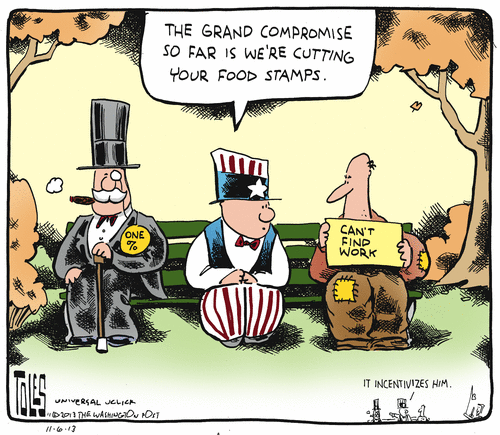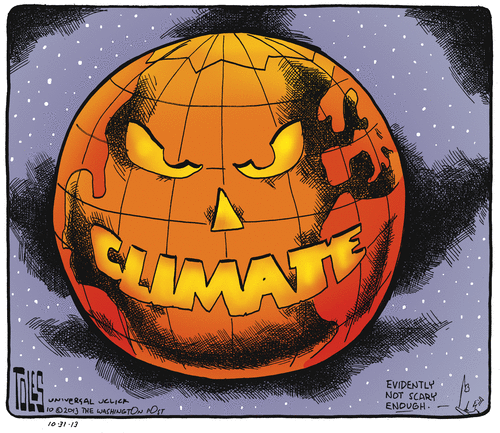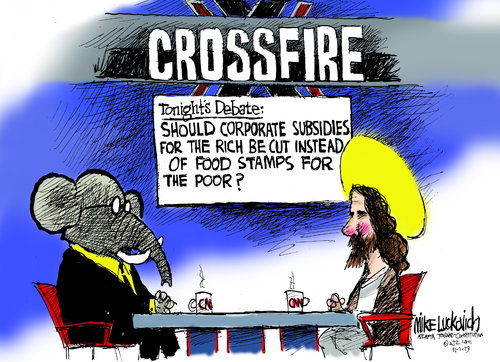Newark Star-Ledger, Nov. 24, 2013
By Barry Carter/Star-Ledger
![]()
Tractor-trailers cross over railroad tracks and pull up to an assortment of industries, some under state investigation for soil contamination. Newark’s Ironbound section by the Passaic River is the ideal place for a paint company, warehouses, businesses that handle lubricants and clean chemical tanks sitting on the ground like watermelons.
There’s no reason to think anyone would live here.
But there are families in this forgotten part of Newark, an island of blue-collar folk barely clinging to a down-home way of life Hurricane Sandy took from them last year.
 Janet Rosero, a resident of Esther Street in Newark, whose home, as well as most of her neighbors, was severely damaged by Hurricane Sandy, stands in her gutted home as she reads a water bill from the City of Newark. The little known section of Newark called the island got hammered by the Sandy storm leaving eight homes abandonded. They are frustrated by the state’s red tape in getting funds to fix up damaged homes. The are upset with the city for its incompetence.Robert Sciarrino/The Star-Ledger
Janet Rosero, a resident of Esther Street in Newark, whose home, as well as most of her neighbors, was severely damaged by Hurricane Sandy, stands in her gutted home as she reads a water bill from the City of Newark. The little known section of Newark called the island got hammered by the Sandy storm leaving eight homes abandonded. They are frustrated by the state’s red tape in getting funds to fix up damaged homes. The are upset with the city for its incompetence.Robert Sciarrino/The Star-LedgerThey all knew each other on Esther, Joseph and Albert streets. They knew who belonged and who didn’t. Even the stray dog was fed and welcome.
“This isn’t just a regular community,” said Jaime Beja. “On the weekends everybody was outside.”
Now nearly everybody is gone.
It’s like a ghost town, like they don’t exist. Leaders of the Ironbound Community Corp., a grassroots group helping residents cope in Sandy’s aftermath, said eight homes out of 25 are empty because of foreclosure, condemnation and owners walking away from what they can’t fix. When you cross over Raymond Boulevard and turn onto Waydell Street, another 75 homes were damaged but those residents are trying to rebuild.
“People are disgusted with the system and feel abandoned,” said Reina Esteras, a disaster relief case manager for the Ironbound organization. “They’re at the breaking point. They’re bitter and they’re angry.”
Never did they think the Passaic River would swallow the neighborhood and wash away the foundations of homes that some will never live in again.
Janet Rosero has moved twice since Sandy, paying rent for an apartment and the mortgage for her home, which she checks regularly. Her place on Esther Street is gutted and the contractor hasn’t returned. She has a notice from the city to get out, but she’s hoping to start over if she can hang on.
“It’s like no one cares,” Rosero said. “I just want to come home.”
But she can’t, and why should she when residents don’t feel like they’re on the map anymore. Garbage has gone uncollected at times and mail has been disrupted too. What the storm didn’t destroy, some residents are trying rebuild, but navigating the state and local bureaucracy for disaster recovery funds has been painstaking. They say they filled out paperwork for grants but it’s gotten lost, a complaint shared by residents across the state in Shore communities who’ve applied for the Reconstruction, Rehabilitation, Elevation and Mitigation, or RREM, program.
Richard E. Constable III, the commissioner of the state’s Department of Community Affairs, said delays in residents getting construction grants from the RREM program have been due to strict federal guidelines.
“Because construction is involved, HUD requires eligible homeowners to jump through numerous federally mandated hoops — much of which we and Governor Christie have felt is unnecessary and redundant given that these are existing homes that cannot be built bigger than what was there before,” Constable said.
In the meantime, Constable said the state’s Homeowner Resettlement Program has been far more successful in assisting residents, because it doesn’t involve construction and high levels of documentation. More than 16,700 homeowners have been approved for a $10,000 resettlement grant and their checks are in the mail.
The Ironbound faithful hope they’re somewhere in the pipeline, because Newark hasn’t been helpful. The organization’s leaders said it took the city four months to issue flood plain letters to residents with more than 50 percent property damage. Having that letter could have expedited their claims for state recovery funds, they said. With help from their councilman, Augusto Amador, some residents got the document but others continue to wait and fight the city over bills they don’t deserve.
Ana Dos Santos said she was fined for placing storm debris in front of her Joseph Street house. Just what she needed after her son, Jaime Beja, renovated the home two months before the storm. Like many of her neighbors, including Rosero, Dos Santos received a water bill even though she wasn’t in the home for months.
“Are you kidding me?” she said.
On limited funds, the Ironbound group has paid rent, mortgages and water bills for residents. In one case, Esteras said they paid a homeowner’s water bill that had grown to $5,344.82 when the person had not been living there. In fact, the homeowner has not returned to this day. She said the city only adjusted his bill to $2,053.75 and refused to reduce it any further.
The only thing the city had to say for itself was this: “Department directors have been notified of the complaints from our residents to The Star-Ledger. The City of Newark will work to expedite the resolution of any issues facing property owners in the Ironbound section as a result of Hurricane Sandy.”
Esteras said residents were struggling to stay in their homes before the storm, but this has wiped them out.
Leizza Salgado is not coming back. Neither is her sister. The city condemned their Esther Street homes and the bank foreclosed, locking them out after two months with their lives in chaos.
“They didn’t give us any notice,” Salgado said. “It was a bad experience.”
She has moved to another section of the Ironbound, but there’s hope for her former neighbors. They learned last week the state Department of Environmental Protection is interested in buying out their homes. DEP spokesman Larry Ragonese said the program has to be explained and the majority of residents would have to participate for it to work.
Who knows how this will shake out. They are beaten down and tired.
“I just can’t take it anymore,” Dos Santos said. “They’ve worn us down. We’re like, just take it. Give me money and I’ll get out.”
Only problem is, this process could take another six months. Residents may not have that long.







